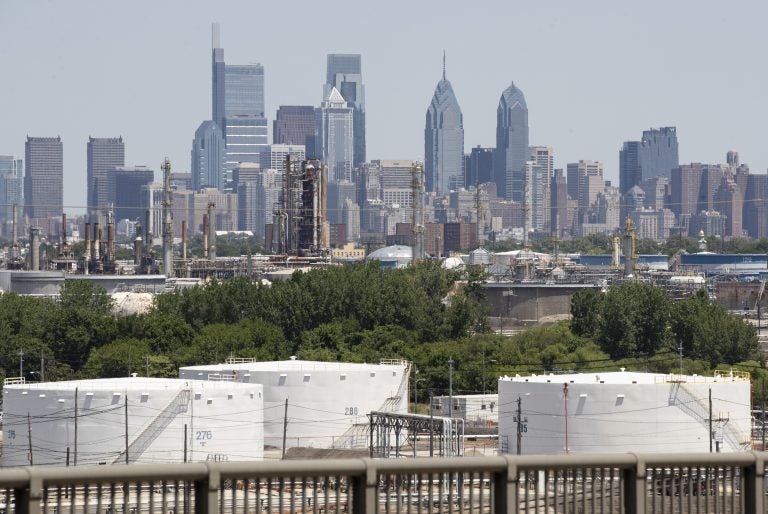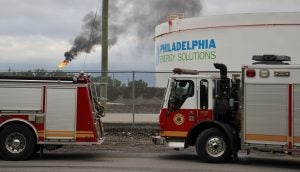Will Philly refinery shutdown create jobs at area competitors? Unlikely, analysts say
With other refineries in the region at or near capacity, the East Coast will likely look to the Gulf Coast and Europe for gasoline and other products.

The Philadelphia Energy Solutions Refining Complex in Philadelphia is shown Wednesday, June 26, 2019. (AP Photo/Matt Rourke)
Even with the largest oil refinery on the East Coast slated for closure, don’t expect other refineries in the region to pick up the lost capacity or jobs, analysts said Thursday.
Instead, the region will likely look to Gulf Coast refineries or those in Europe for more gasoline and other petroleum products, they said.
That means many of the roughly 1,000 workers facing layoffs at the fire-damaged Philadelphia Energy Solutions complex in South Philly may not have the chance for other refinery jobs close to home.
PES has said it will prepare the facility for a sale but expected all layoffs to be permanent. The announcement came shortly after a blaze erupted there last Friday, triggering a series of explosions that could be heard miles from the scene.
There are four other refineries in the greater Philadelphia region: facilities owned by PBF Energy in Paulsboro, N.J. and Delaware City, Del.; by Monroe Energy in Trainer, Pa.; and by Phillips 66 in Linden, N.J.
Asked whether any of the PES workers could potentially find work at the Linden site, a Phillips 66 spokeswoman sent a link to the company’s jobs board. It showed only two openings: in Oklahoma and Texas.
A spokesman for Monroe Energy declined to comment, although there are more opportunities on its jobs board, and PBF Energy did not respond to a message seeking comment.
Refiners do not publicize detailed data on their output, but the typical refinery is running at around 90% capacity this time of year, said Patrick DeHaan, head of petroleum analysis at GasBuddy.
Any increased production those facilities could manage wouldn’t come close to replacing the PES plant’s ability to process 335,000 barrels of crude oil a day, or about a quarter of the region’s capacity, he said.
And even if there were an appetite to expand some of those facilities — which there likely is not — it couldn’t happen overnight, he said.
“You’re talking years of environmental oversight, plans being drawn up,” DeHaan said. “It would probably take several years to increase production.”
Chris van Moessner, an editor covering oil futures and S&P Global Platts, said the East Coast was reliant on imports of gasoline to meet demand even before the PES fire.
“So that incentive is already there last month” for facilities to increase production, he said. “The economics are maybe a little bit better now than they were, but if they’re going to expand, they had the option to do it in the past already.”
WHYY is your source for fact-based, in-depth journalism and information. As a nonprofit organization, we rely on financial support from readers like you. Please give today.






